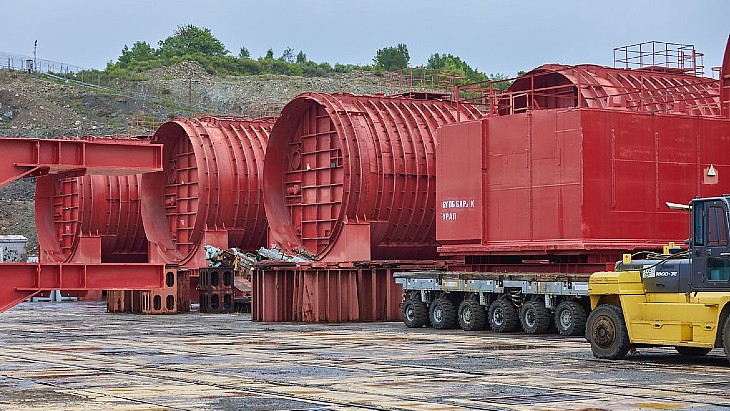In total, the state nuclear corporation said, 202 Russian nuclear-powered submarines decommissioned before 2022 have been dismantled, including 82 from the country's Far East. It added that all used nuclear fuel has been removed from the region.
At a ceremony to mark 10 years since the first use of the long-term storage site for reactor compartments at Razboynik Bay in Russia's Far East, Rosatom's Alexander Abramov said: "Following 20 years of work within the framework of various federal target programmes, we have something to be proud of: coastal infrastructure has been created throughout the country that allows for the safe elimination of the accumulated radiation-hazardous legacy, and in the Far East there is no longer any spent nuclear fuel or hazardous facilities in the water area subject to disposal.
"The Soviet nuclear legacy has been completely eliminated in the region. A long-standing serious environmental problem has been solved."
The reactor compartments of the dismantled nuclear submarines have been placed in specially constructed containers in a secure site on land, and are subject to radiation monitoring and maintenance, such as checking the condition of the anti-corrosion protective coating, the company said.
The cleanup efforts for legacy nuclear material and the move to protect the sea and coastal environments with new developments such as the Razboynik Bay storage site have been supported by other countries, notably Japan, over the past three decades. Last year Rosatom said it had completed the 10-year process of dismantling the service ship Lepse, which was used to refuel the nuclear icebreaker fleet from 1963 to 1981 and then used for the storage of used fuel and radioactive waste.
It was moved in September 2012 to the Nerpa shipyard in Snezhnogorsk in the Murmansk region of Russia for dismantling. It held 639 damaged and distorted used nuclear fuel assemblies which could not be removed from their specialised storage facilities and represented a serious radiological hazard for the region. In a process which was supported by the European Bank for Reconstruction and Development, the decision was taken to carve up the ship.
The Lepse was dismantled to form two large storage packages, one of which held the used fuel, and was moved into a containment shelter constructed for defueling operations and equipped with removal tools with the fuel being sent for reprocessing at the Mayak Chemical Combine in the Urals and the last section of the vessel, the bow, placed in the Sayda-Guba reactor compartment storage facility.





_47120.jpg)
_23621.jpg)

_63865.jpg)





